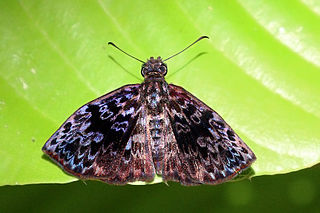
Rhetoric is the art of persuasion. It is one of the three ancient arts of discourse (trivium) along with grammar and logic/dialectic. As an academic discipline within the humanities, rhetoric aims to study the techniques that speakers or writers use to inform, persuade, and motivate their audiences. Rhetoric also provides heuristics for understanding, discovering, and developing arguments for particular situations.

The Tisza, Tysa or Tisa, is one of the major rivers of Central and Eastern Europe. It was once called "the most Hungarian river" because it flowed entirely within the Kingdom of Hungary. Today, it crosses several national borders.
Gorgias was an ancient Greek sophist, pre-Socratic philosopher, and rhetorician who was a native of Leontinoi in Sicily. Along with Protagoras, he forms the first generation of Sophists. Several doxographers report that he was a pupil of Empedocles, although he would only have been a few years younger. W. K. C. Guthrie writes that "Like other Sophists, he was an itinerant that practiced in various cities and giving public exhibitions of his skill at the great pan-Hellenic centers of Olympia and Delphi, and charged fees for his instruction and performances. A special feature of his displays was to ask miscellaneous questions from the audience and give impromptu replies." He has been called "Gorgias the Nihilist" although the degree to which this epithet adequately describes his philosophy is controversial.

Isocrates was an ancient Greek rhetorician, one of the ten Attic orators. Among the most influential Greek rhetoricians of his time, Isocrates made many contributions to rhetoric and education through his teaching and written works.

Lysias was a logographer in Ancient Greece. He was one of the ten Attic orators included in the "Alexandrian Canon" compiled by Aristophanes of Byzantium and Aristarchus of Samothrace in the third century BC.

The ten Attic orators were considered the greatest Greek orators and logographers of the classical era. They are included in the "Canon of Ten", which probably originated in Alexandria. A.E. Douglas has argued, however, that it was not until the second century AD that the canon took on the form that is recognised today.
Parataxis is a literary technique, in writing or speaking, that favors short, simple sentences, without conjunctions or with the use of coordinating, but not with subordinating conjunctions. It contrasts with syntaxis and hypotaxis.
Corax was one of the founders of ancient Greek rhetoric. Some scholars contend that both founders are merely legendary personages, others that Corax and Tisias were the same person, described in one fragment as "Tisias, the Crow". And according to Aristotle, Empedocles was the actual founder of rhetoric, but this is also unlikely. It is believed that William Shakespeare derived the name Sycorax from Corax of Syracuse. Corax is said to have lived in Sicily, Magna Graecia, in the 5th century BC, when Thrasybulus, tyrant of Syracuse, was overthrown and a democracy formed.
Thrasymachus was a sophist of ancient Greece best known as a character in Plato's Republic.

Hatzegopteryx is a genus of azhdarchid pterosaur found in the late Maastrichtian deposits of the Densuş Ciula Formation, an outcropping in Transylvania, Romania. It is known only from the type species, Hatzegopteryx thambema, named by Buffetaut et al. in 2002 based on parts of the skull and humerus. Additional specimens, including a neck vertebra, were later placed in the genus, representing a range of sizes. The largest of these remains indicate it was among the biggest pterosaurs, with an estimated wingspan of 10 to 12 metres.

The Hesperiini or branded grass skippers are a tribe in the Hesperiinae subfamily of skipper butterflies. They are known as branded grass skippers because all the males in this tribe feature a black diagonal brand of scales on their forewings that exude pheromones to attract females.

The Devil's Dykes, also known as the Csörsz árka or the Limes Sarmatiae, are several lines of Roman fortifications built mostly during the reign of Constantine the Great (306–337), stretching between today's Hungary, Romania and Serbia.

Kimberly Kay Reynolds is an American politician serving as the 43rd governor of Iowa since 2017. A member of the Republican Party, Reynolds served as the 46th lieutenant governor of Iowa from 2011 to 2017.

Cycloglypha is a genus of skippers in the family Hesperiidae.

Tisias is a genus of skippers in the family Hesperiidae.

Flatidae are a family of fulgoroid planthoppers. They are cosmopolitan in distribution and are distinguished from others in the superfamily by a combination of characters. Like all other planthoppers, they suck phloem sap of plants. Some species are known to communicate with vibrations through the plant stems. Communication may be with mates, or with ants that tend the nymphs, protecting them and gathering honeydew secretions. Adults of some species have brightly coloured forewings which are tougher and known as tegmina unlike the membranous hindwings which are used for flight. Although a few can be identified by their coloration, most species requires dissection and examination under a microscope with access to literature on already described species.

Tisias caesena is a butterfly in the family Hesperiidae. It is found in Brazil.

Vincenzo Mirabella Alagona was an Italian historian, archaeologist and architect, best known for his work Plans of Ancient Syracuse.

Sciocorini is a tribe of stink bugs in the family Pentatomidae.













